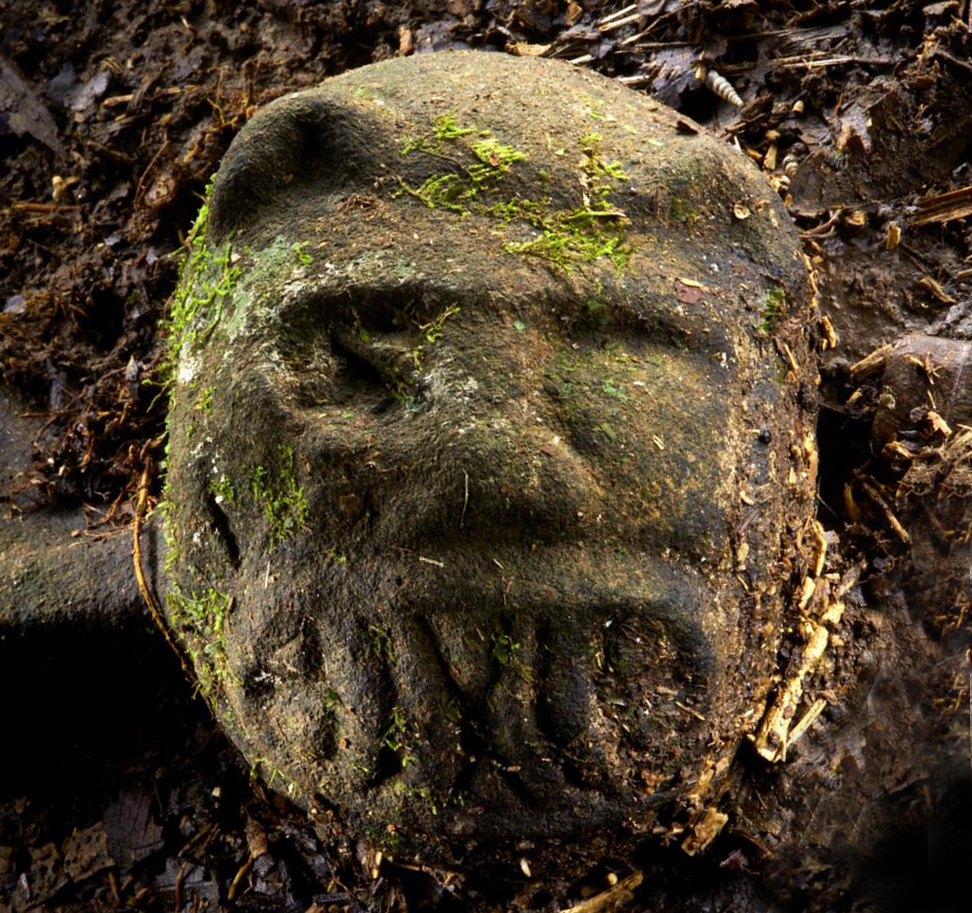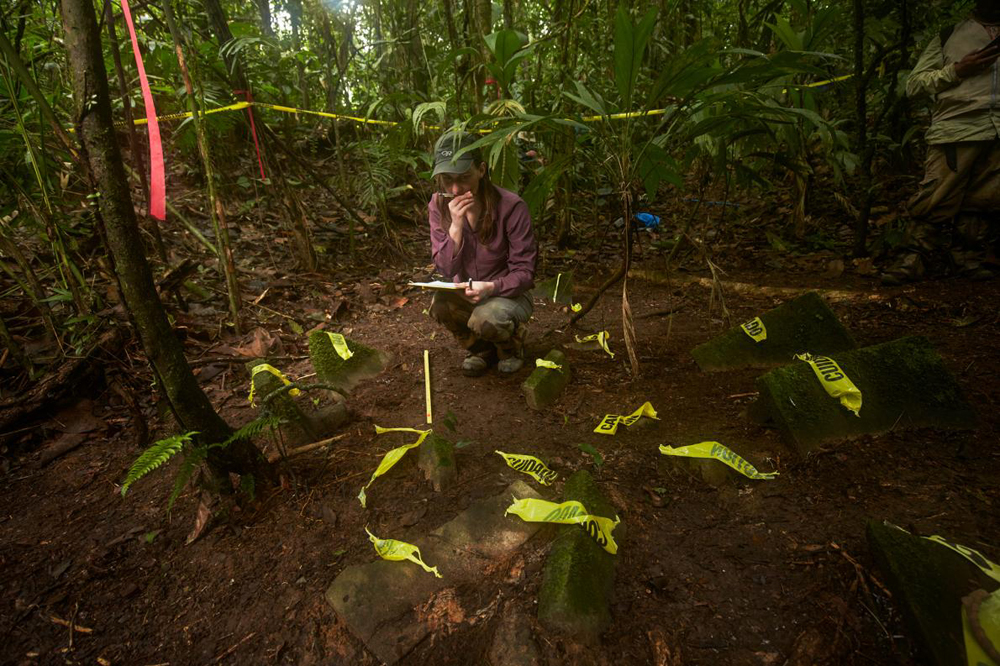


Lost City Discovered
|
Lost City Discovered: the Honduran Rain Forest reveals the legendary City of the Monkey God, as archaeologists continue to investigate plazas, earthworks, mounds, and stone sculptures.
A National Geographic online article by Douglas Preston reports on the discovery and documentation of the archaeological remains of a vanished culture in the jungles of Honduras, Central America. The artefacts include a carved effigy of a composite figure representing a human and jaguar (below), thought to be part of a ceremonial seat, or metate.

Image: Dave Yoder, National Geographic
The site, location undisclosed, was first discovered in 2012 by a team following local information of the City of the Monkey God, also known as the White City. Since then archaeologists have surveyed and mapped extensive plazas, earthworks, mounds, and an earthen pyramid. A collection of stone sculptures has been recorded. Many artefacts still lie buried.

Image: Dave Yoder, National Geographic
As for the culture, archaeologists working on the project, including Christopher Fisher from Colorado State University, are not attributing this to the Maya; indeed, as yet they have no name for the culture. Based on the artefacts themselves, the team believe the dates involved are between A.D. 1,000 to 1,400.
Mesoamerica is a region and cultural area in the Americas, within which a number of pre-Columbian societies flourished; the area is defined by a mosaic of cultural traits developed and shared by its indigenous cultures.
Beginning as early as 7,000 BC, the domestication of maize, beans, squash and chili, as well as the turkey and dog, caused a transition from paleo-Indian hunter-gatherer tribal grouping to the organization of sedentary agricultural villages. In the subsequent 'Formative' period, agriculture and cultural traits such as mythological and religious traditions were diffused through the area. Villages began to become socially stratified and develop into chiefdoms with the development of large ceremonial centers, interconnected by a network of trade routes for the exchange of luxury goods, such as obsidian, jade, cacao, cinnabar, shells, hematite, and ceramics.
It is thought that the City of the Monkey God was just such a ceremonial center.
Read more about the culture and rock art of Central America:
http://www.bradshawfoundation.com/el_salvador/index.php
http://www.nationalgeographic.com
COMMENTS |
|











